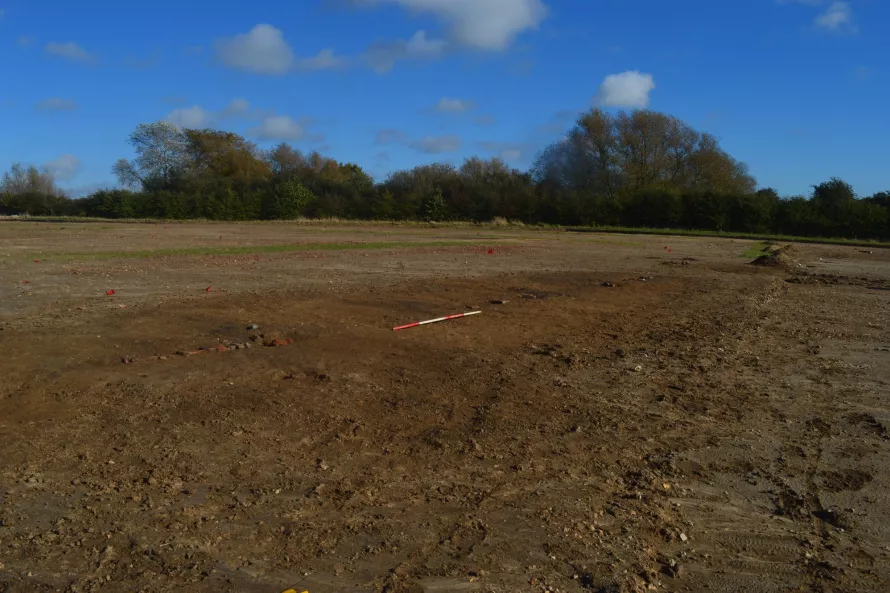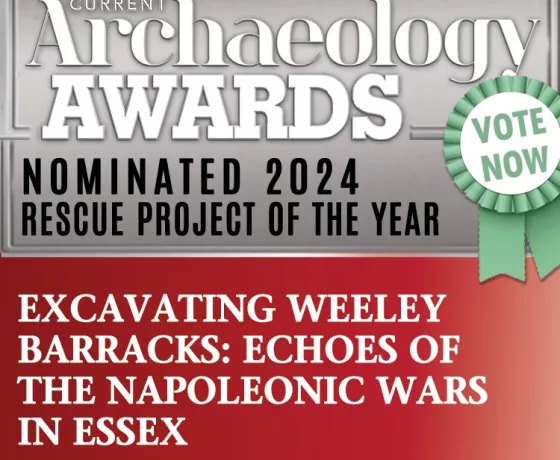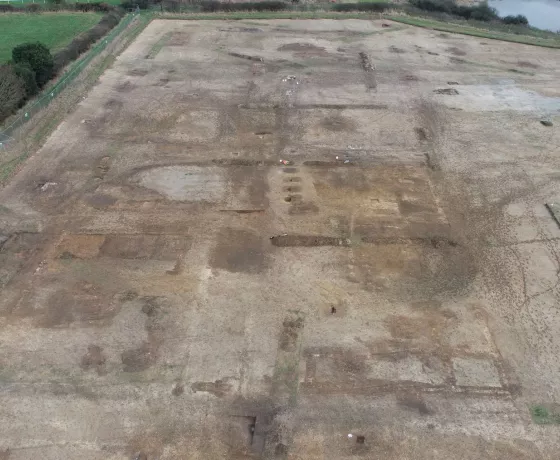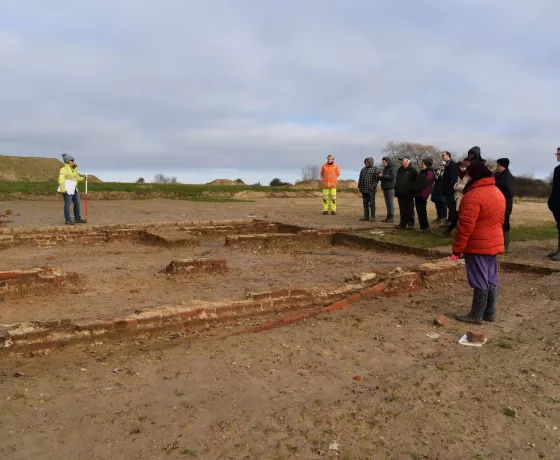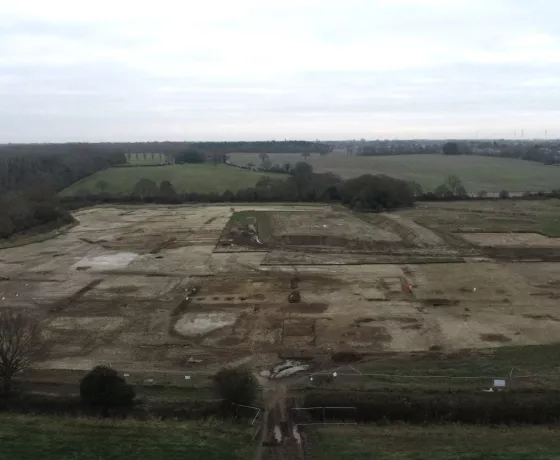One of the most exciting parts of our job is discovering things which we weren’t anticipating. The trial trench evaluation, which we did at Weeley at the start of the year, gives you a broad idea of what might be going on site, but it doesn’t tell you everything – hence why we came back to do these larger scale excavations. We all knew that we would be finding remains relating to the Weeley Barracks, but we weren’t expecting too much else. During our evaluation we did have a smattering of archaeological features dating from the Iron Age (800BC to AD43) and Roman (AD43 to 410) periods, but these were pretty sparse and appeared to mostly be located on the areas of the site to the west and north of the barracks.
However, as typically does happen in this profession, we appear to have found something else as well. We appear to have a concentration of Bronze Age (2500 to 800BC) as well as Iron Age remains at the southernmost end of the main excavation area, hidden in and amongst the Napoleonic remains. A sneaky twist! The main feature we have discovered is a large circular ditch. The ditch itself is about 1m wide, but the ring which it creates is about 18m in diameter. The ring is also complete, what we in archaeology would refer to as an ‘annular ditch’, meaning there is no way to access the interior of the feature. At the moment we have a couple of ideas as to what this might be, but we want to do some more digging to find out for certain before we say any more.

Elsewhere on the site we continue to investigate the Napoleonic remains. Whilst digging some of the beam slots (see our weeks 7 and 8 update) we’ve happened upon some sort of large pit hiding beneath them. The feature is currently entirely invisible on the surface, but we now know it’s at least 1m deep and has had lots of tile thrown into it. So, the current theory is that it’s a large quarry pit that pre-dates the barracks, which has been filled in with rubbish and then a building constructed over the top of it.

Nearby to this, we’ve been cleaning up the remnants of some walls to try and find the full extent of the building which they relate to. Most of the structure has disappeared – either by it being deconstructed when the barracks were decommissioned, or by agricultural ploughing since then. But the shadow of a building about 20m long and 11m wide is starting to show itself. One nice find which came from this structure is a fragment of glass. It kind of looks like the stem of a wine glass, but what is so interesting is that it kind of looks like it’s been melted a bit, as the stem is all twisted.

Other posts in this collection
Read our latest posts about the archaeological investigations at Weeley.

